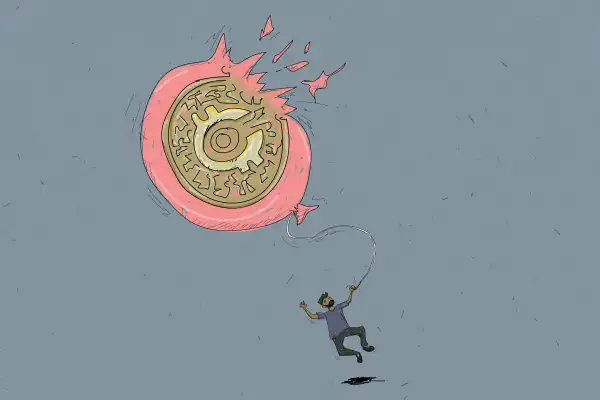How to Avoid This Common Cryptocurrency Investing Mistake
Money is not a client of any investment adviser featured on this page. The information provided on this page is for educational purposes only and is not intended as investment advice. Money does not offer advisory services.

There’s something more satisfying about having a single dollar in your pocket than a dollar’s worth of loose change. Experts say the same intuition applies to cryptocurrency — and it could be getting some investors in trouble.
It’s a psychological impulse for the whole over the fractional known as “unit bias.” Unit bias was first invoked when researchers discovered that diners were satisfied after a full plate of food, no matter what size the plate. But the instinct seems to also apply in the digital world. Many novice investors — rather than study the blockchain innovations “altcoins” such as Ripple, Cardano and Dogecoin are supposed to represent — simply buy the coins whose low prices mean they can own them outright.
“Something about buying the whole, single unit of Litecoin feels better than buying a tiny portion of one Bitcoin,” as a one blogger wrote on blockchain site Steemit. “One could take this a step further…How about buying [thousands of] dogecoins for the same price? Now you're talking! Much win!”
Do Your Research
Like a lot of things in crypto world, “unit bias” has become a self-perpetuating trend as a series of fringe currencies, no matter how improbable, burst into the mainstream. Dogecoin captured the investing world’s imagination when the currency’s value spiraled higher in the first quarter of this year, before falling back towards earth. Other “altcoins,” including Cardano, followed, even as dozens atrophied or disappeared.
There’s a sense, when an investor pulls up the list of cryptocurrencies on a site like Coindesk, to see Bitcoin quoted at $45,000 or even Ethereum at $3,000 that they’ve already missed the boat on the big currencies. The prospect of making a fortune on half a bitcoin seems remote compared with buying 100 of a recently launched long-shot coin that just might blast off like Dogecoin.
Crypto experts say the design of the coin is a more important factor in evaluating it as an alternative to bitcoin than the unit price. Rather than tracking price of Dogecoin, investors should have been drilling down into the computer power on its network, quality of software and community size as compared with bitcoin, said editors at Coindesk’s Crypto Long & Short newsletter, in a recent post.
“All of these factors went a long way toward supporting the price gulf between the mother of all cryptocurrencies and its third-generation canine copy,” the Coindesk editors said.
While few have the knowhow to figure out exactly how Dogecoin works, a little research can sometimes reveal obvious flaws.
“Strip unit bias out of the equation and those dirt cheap coins might start to look a lot dirtier than they do cheap,” as bloggers on the introductory site learncrypto put it.
More from Money:
Robinhood for Beginners: A Complete Guide to Investing With the Controversial Stocks App
